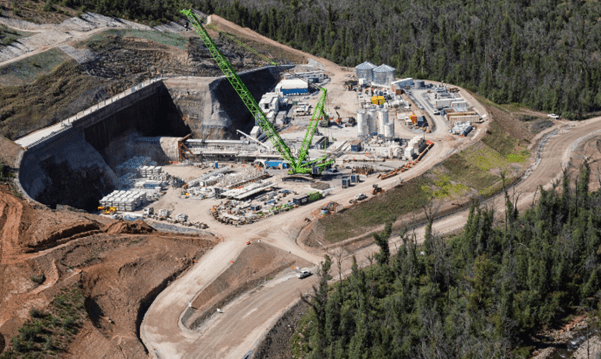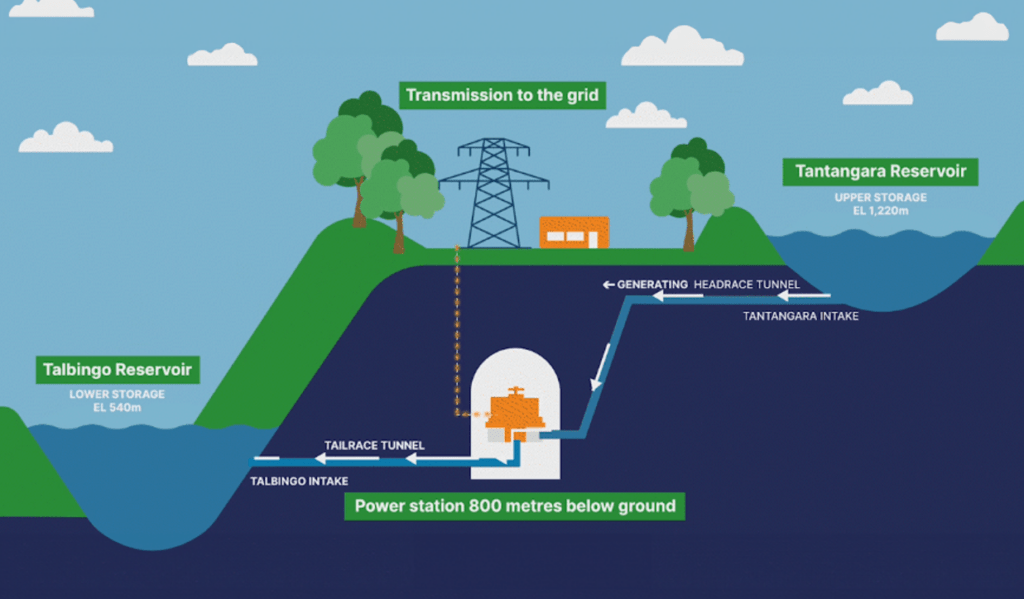Snowy 2.0 will revolutionise Australia’s renewable energy initiatives – making it critical to our low-carbon future… but that doesn’t mean getting it done has been smooth sailing.
In May this year, Mount Kosciuszko’s Snowy 2.0 Hydropower project hit literally another roadblock with TBM Florence wedged in hard rock unable to move. After it was mistakenly turned too sharply when trying to form a curve in the tunnel, the TBM was stuck for 7 long weeks. But finally, on the 11th of July Florence resumed excavation after high-pressure water jetting helped remove the surrounding rock. However, the team anticipates that the varying rock conditions throughout the route may impact progress yet again, especially as the tunnel curve is carved out.
This was not the first time the project has been stuck between a rock and a hard place – where Florence was bogged for the majority of 2023, causing a sinkhole in the alpine plains above. Toxic gases also filled the tunnels last year, and part of the tunnel collapsed this year due to blasting in an area that breached a nearby tunnel.
With one issue rolling out after another, the expected completion date has been drastically set back. Initially expected to open in 2021, Snowy 2.0’s completion was delayed to this year but is now anticipated to be finished by December 2028, with commissioning by December 2029. These delays are due to both Covid-19 and the continual construction and technical challenges.
The project’s budget has also blown out a massive amount, increasing from $2BN to $12BN! A lot of this is due to some pretty terrible planning and a lack of due diligence in the initial stages of the project. Now, project managers are considering purchasing a 4th TBM to make up for the time lost by all these delays – boosting the budget once again.
Despite the challenges, completion of the Snowy 2.0 project is crucial. Once operational, it will generate 2,200 megawatts of power from water flow from the Tantangara Dam to the Talbingo Reservoir, supporting renewable energy sources in the power grid.

(Source: Snowy Hydro https://www.snowyhydro.com.au/snowy-20/about/ )
While the challenges continue, the project’s other TBMs are well on track to complete their phases on time.
TBM Lady Eileen Hudson: Lady Eileen Hudson has made significant progress, completing the main access tunnel and advancing into the tailrace tunnel. Thanks to recent enhancements, like a conveyor belt extension, Lady Eileen Hudson is moving more efficiently, covering approximately 3km of the tailrace tunnel so far. This progress is crucial for maintaining the project timeline.
TBM Kirsten: Tasked with excavating the Inclined Pressure Shaft, Kirsten faces a unique challenge due to the steep 47% incline. So far, the TBM has successfully installed trial tunnel lining rings made of specially designed concrete segments that can withstand high water pressures. Kirsten’s work represents a significant engineering feat with these efforts vital to ensure the structural integrity of the tunnel under high-pressure conditions.
Why Australia Needs Snowy 2.0 to Go Ahead
The Snowy 2.0 project is an expansion of the original Snowy Mountains Hydroelectric Scheme, built between 1949 and 1974 in the Mt Kosciuszko National Park. The whole point of this project was to use water flow to generate electricity. So, Snowy 2.0 aims to increase the capacity by 2,000 megawatts by constructing 27km of concrete-lined tunnels.
This extensive development will also include the construction of a new underground power station equipped with 6 reversible Francis pump turbines and motor-generator units. These units are placed strategically to max efficiency.
Francis Pump-Turbines: A reversible Francis pump-turbine is a type of hydropower machinery that can operate in two modes: as a pump and as a turbine. In pump mode, it moves water from a lower reservoir to a higher one, storing energy. In turbine mode, it allows water to flow back down, generating electricity.
Motor Generator Units: A motor-generator unit is a combination of an electric motor and a generator in a single machine. In a hydropower context, these units can operate as motors to drive pumps (lifting water to a higher elevation) or as generators to produce electricity (when water flows back down). This versatility is crucial for systems like Snowy 2.0, where the same equipment must handle both energy storage (pumping water) and energy generation (releasing water).
Basically, the Snowy 2.0 project aims to store and generate electricity using water.
The system pumps water to a higher reservoir when there is excess energy, storing it for later use. Then when energy demand is high, the stored water is released to a lower reservoir, generating power. This method helps balance electricity supply and demand, ensuring a stable and reliable power grid. It’s like a giant battery that uses water to store energy and produce electricity when needed. By doing this, the project supports the use of renewable energy sources like wind and solar, making the power supply cleaner and more sustainable.

(Source: Snowy Hydro https://www.snowyhydro.com.au/snowy-20/about/ )
Once completed, Snowy 2.0 will enhance the existing scheme’s capacity by nearly 50%, providing 350 gigawatt-hours (GWh) of energy storage, enough to power approximately 500,000 homes during peak demand! This project will also contribute to lowering wholesale electricity prices in Australia by addressing power shortages.
Snowy 2.0 is the largest committed renewable energy project in Australia and will play a crucial role in our transition to a low-carbon future at the lowest cost for consumers.
By providing on-demand energy and large-scale storage, it will underpin a secure and stable energy transition, maximising the efficiency of renewables by using surplus solar and wind energy to pump water to higher dams for later use. The project is expected to generate around 4,000 direct jobs in the Snowy Mountains region and thousands more in supply chain and service roles.






